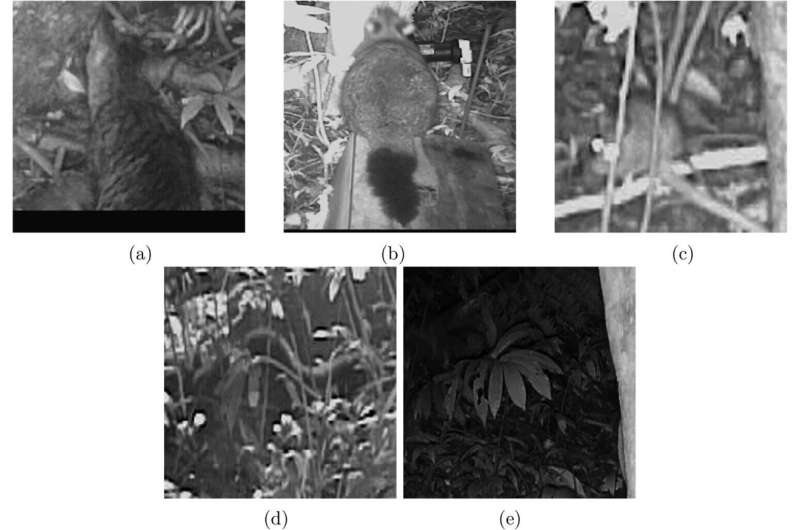Artificial intelligence spots pests in trail cams, and tracks indigenous plants from orbit

A new paper published in the Journal of the Royal Society of New Zealand highlights the importance of having multiple open-source data sets available for environmental research.
Dr. Nick Lim, from the University of Waikato's Computing and Mathematical Sciences department says datasets for environmental research are needed to find environmental solutions over three key fields.
"The data for predator detection as developed by the University of Waikato feed into the predator free initiative and encompass hundreds of video clips captured using infrared cameras. A second important set of data takes low-resolution satellite images and uses AI to improve the images and create high-resolution data for researchers. And the third key data is around identifying land use and tracking indigenous flora and protected forests using aerial photographs."
Dr. Lim says making multiple datasets available open source is key to helping researchers create new solutions to environmental problems.
"Many of these datasets were used last week in the first Environmental Hackathon, which brought researchers from a number of disciplines together with the aim of creating unique and new solutions to environmental problems by looking at data that may not have been considered until this point."
Dr. Lim says the ability to access different datasets paves the way to more creative thinking when tackling the problems faced by the environment and climate change.
"The TAIAO project also contains a collated list of other datasets provided and licensed by our data partners that may be of interest to other researchers. We're doing a lot of work in protecting the biodiversity of New Zealand, particularly around species classification, and we look forward to working with researchers and analysts in the years to come to continue this important work."
More information: Nick Lim et al, Showcasing the TAIAO project: providing resources for machine learning from images of New Zealand's natural environment, Journal of the Royal Society of New Zealand (2022). DOI: 10.1080/03036758.2022.2118321
Provided by University of Waikato



















